Abstract
Synthetic sewage containing phenol, acetone, and alkanols plus 4-chlorophenol or a mixture of isomeric chlorophenols is completely degraded by a defined mixed culture with Pseudomonas sp. strain B13 as a chlorocatechol-dissimilating member of the community. Total degradation of the organic carbon was indicated by release of stoichiometric amounts of chloride and low content of dissolved organic carbon in the cell-free effluents. During adaptation to high loads of chlorophenols the initial meta-cleavage activity was completely replaced by ortho-cleavage activity of type I and II. In the fully acclimated culture, hybrid strains such as Alcaligenes sp. strain A7-2 were detected, which are more competitive than Pseudomonas sp. strain B13 with respect to chlorophenol degradation.
Full text
PDF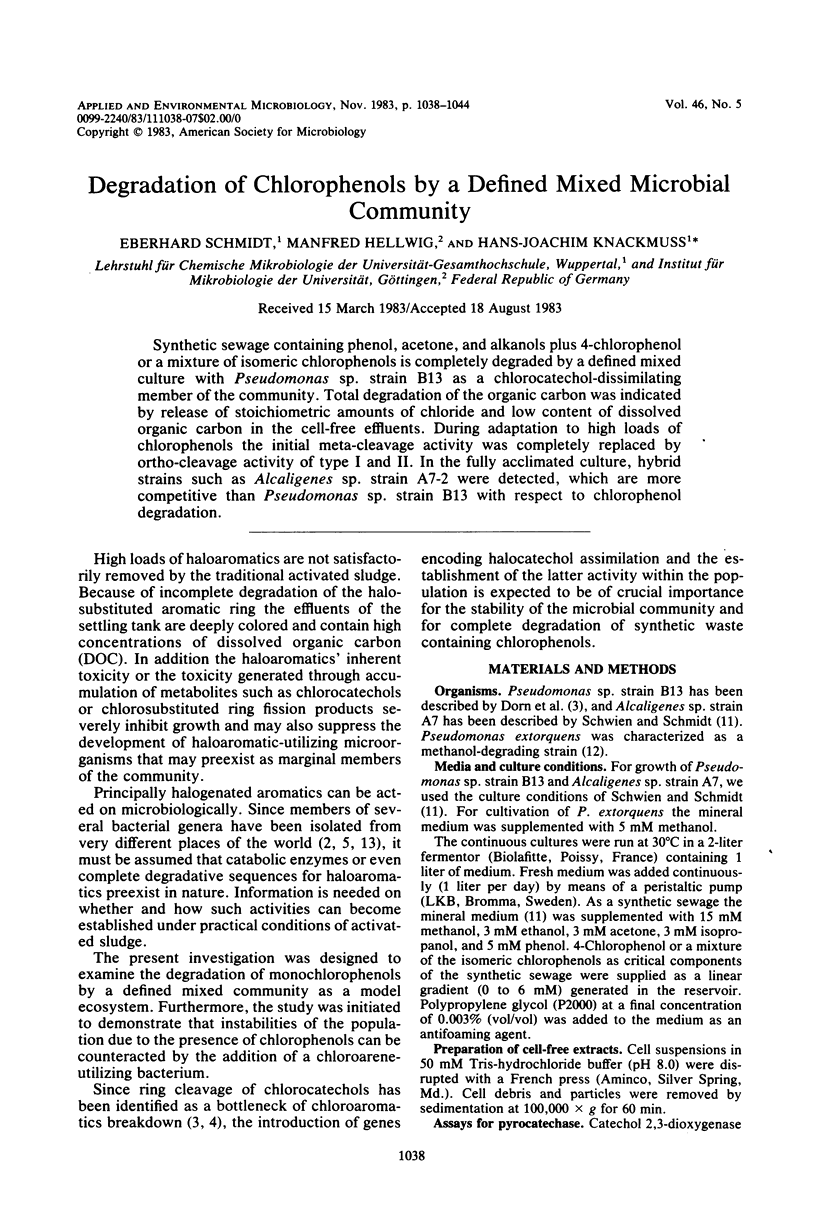
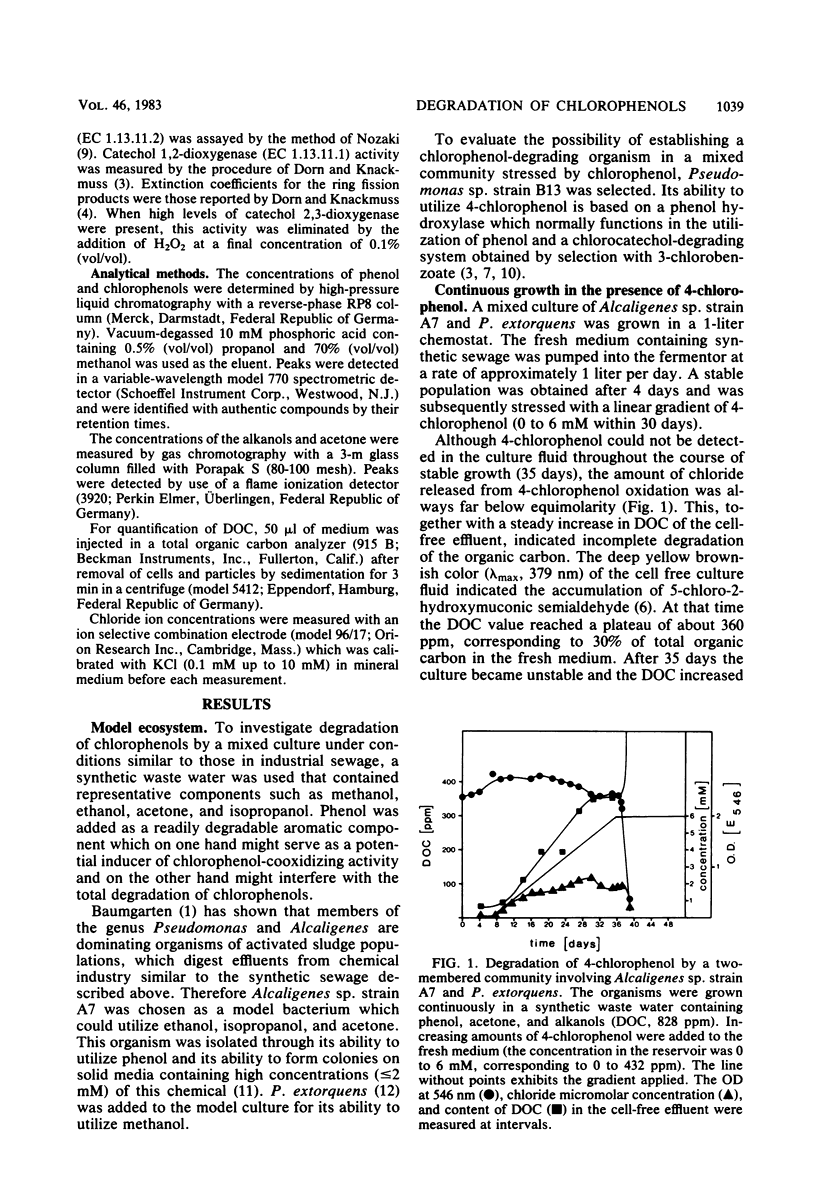
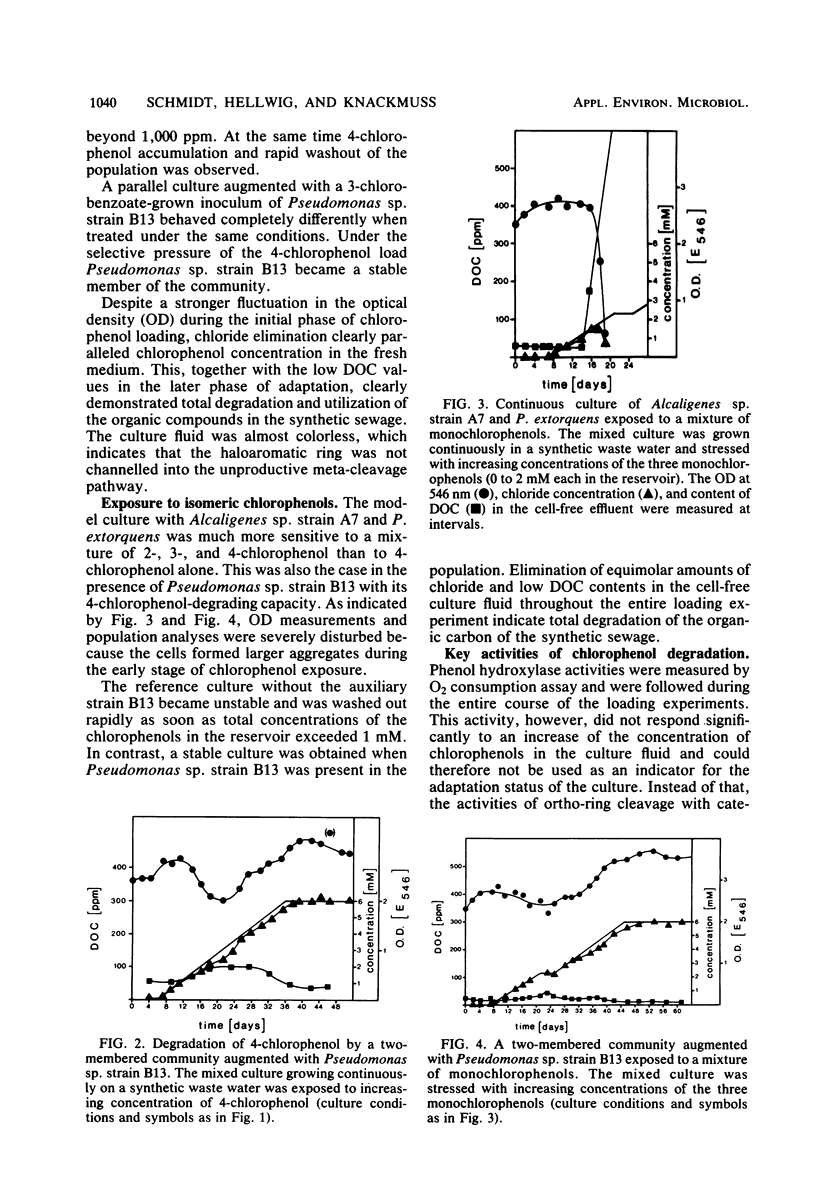
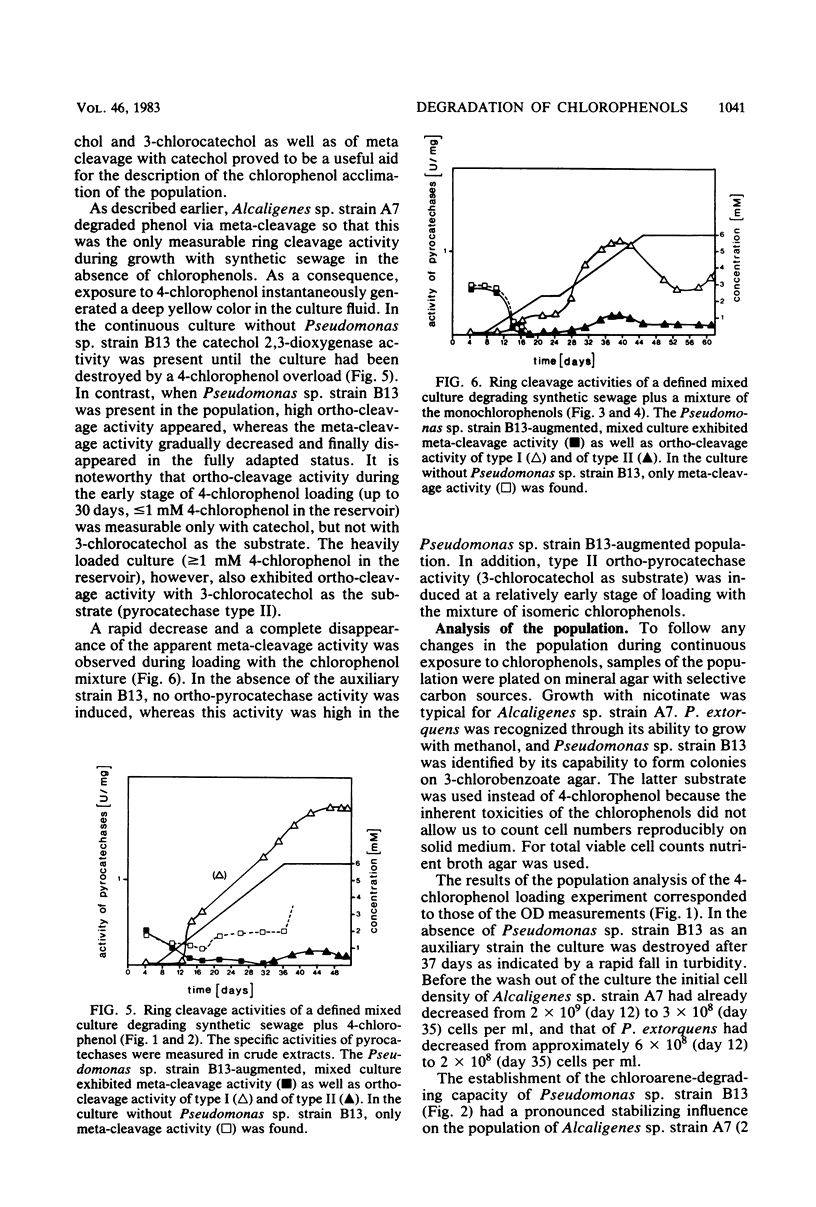
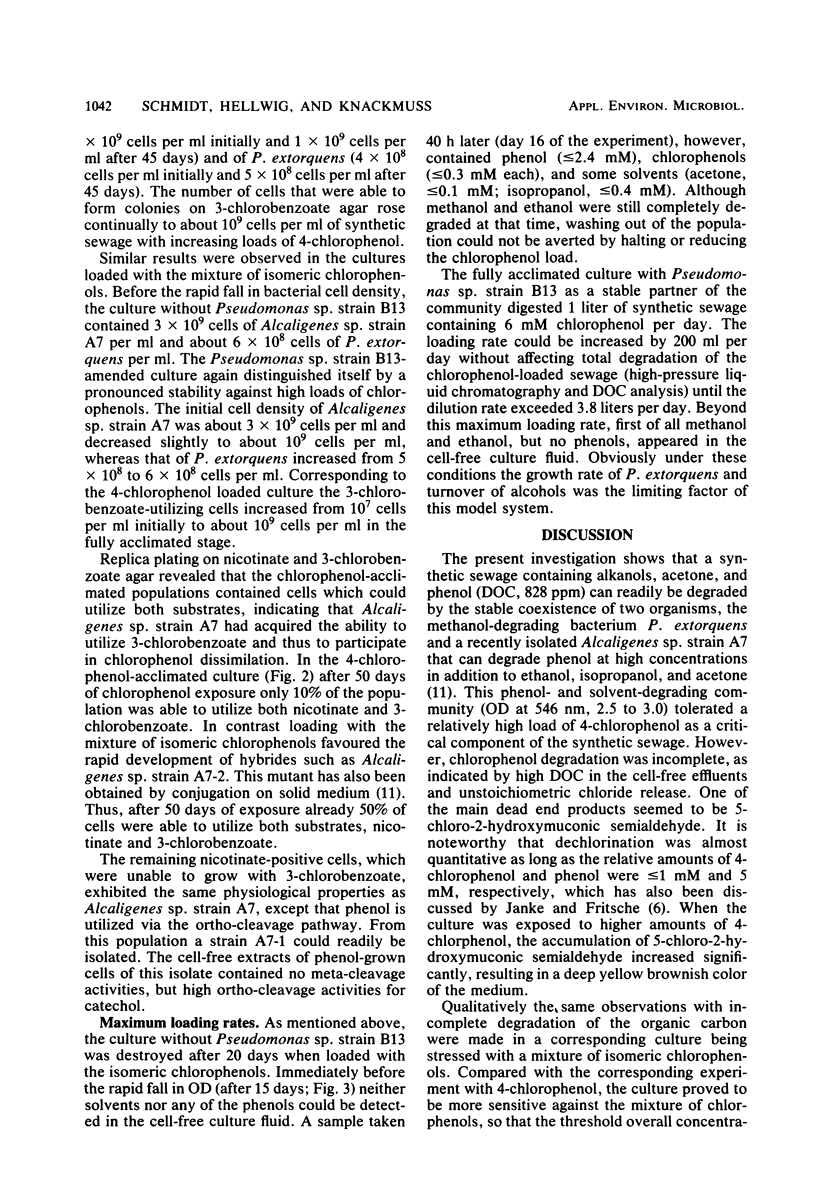
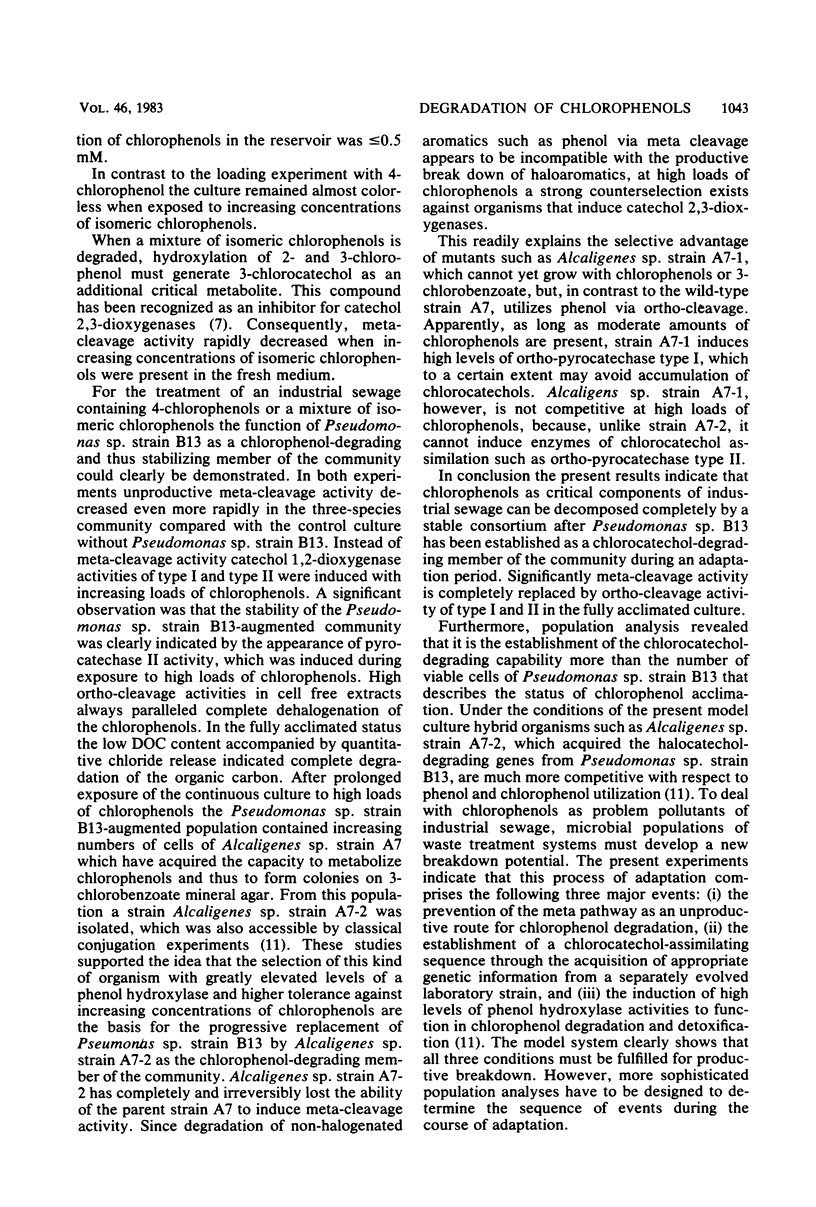
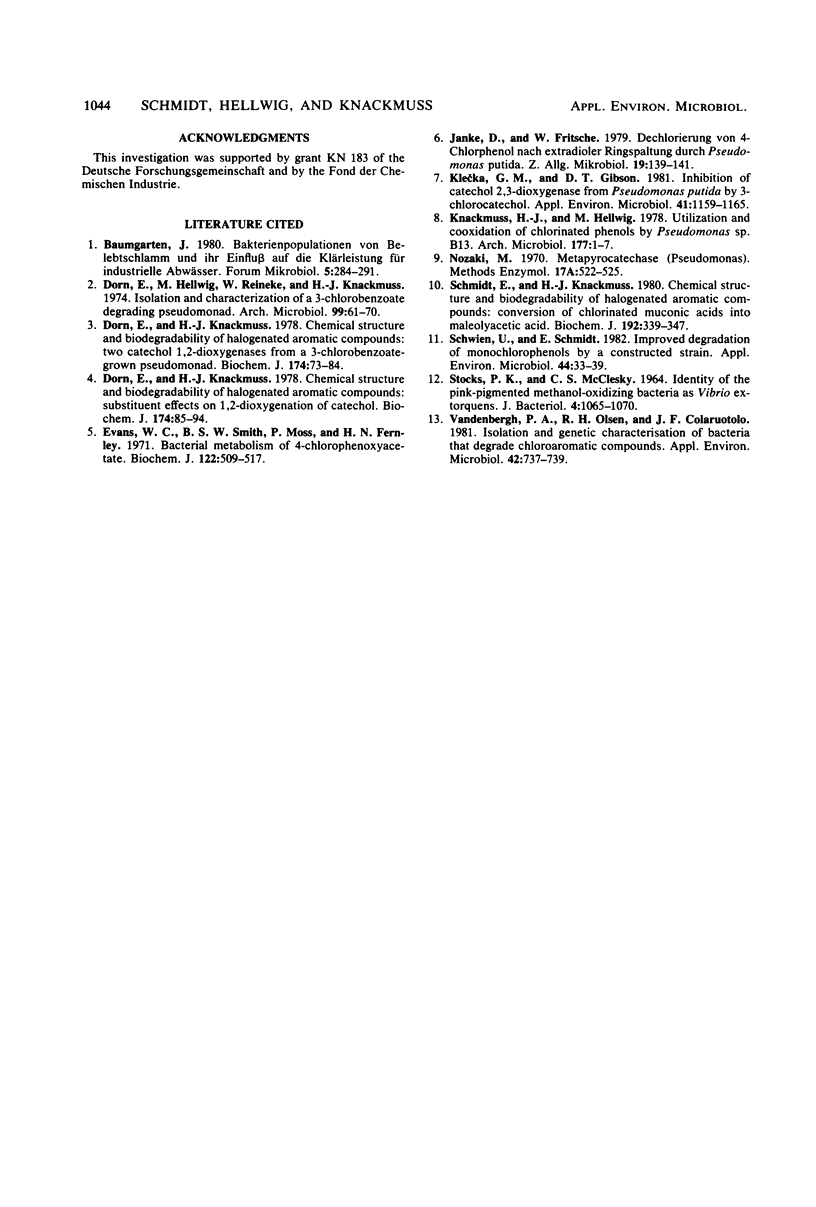
Selected References
These references are in PubMed. This may not be the complete list of references from this article.
- Dorn E., Hellwig M., Reineke W., Knackmuss H. J. Isolation and characterization of a 3-chlorobenzoate degrading pseudomonad. Arch Microbiol. 1974;99(1):61–70. doi: 10.1007/BF00696222. [DOI] [PubMed] [Google Scholar]
- Dorn E., Knackmuss H. J. Chemical structure and biodegradability of halogenated aromatic compounds. Substituent effects on 1,2-dioxygenation of catechol. Biochem J. 1978 Jul 15;174(1):85–94. doi: 10.1042/bj1740085. [DOI] [PMC free article] [PubMed] [Google Scholar]
- Dorn E., Knackmuss H. J. Chemical structure and biodegradability of halogenated aromatic compounds. Two catechol 1,2-dioxygenases from a 3-chlorobenzoate-grown pseudomonad. Biochem J. 1978 Jul 15;174(1):73–84. doi: 10.1042/bj1740073. [DOI] [PMC free article] [PubMed] [Google Scholar]
- Evans W. C., Smith B. S., Moss P., Fernley H. N. Bacterial metabolism of 4-chlorophenoxyacetate. Biochem J. 1971 May;122(4):509–517. doi: 10.1042/bj1220509. [DOI] [PMC free article] [PubMed] [Google Scholar]
- Janke D., Fritsche W. Dechlorierung von 4-Chlorphenol nach extradioler Ringspaltung durch Pseudomonas putida. Z Allg Mikrobiol. 1979;19(2):139–141. doi: 10.1002/jobm.3630190210. [DOI] [PubMed] [Google Scholar]
- Klecka G. M., Gibson D. T. Inhibition of catechol 2,3-dioxygenase from Pseudomonas putida by 3-chlorocatechol. Appl Environ Microbiol. 1981 May;41(5):1159–1165. doi: 10.1128/aem.41.5.1159-1165.1981. [DOI] [PMC free article] [PubMed] [Google Scholar]
- Knackmuss H. J., Hellwig M. Utilization and cooxidation of chlorinated phenols by Pseudomonas sp. B 13. Arch Microbiol. 1978 Apr 27;117(1):1–7. doi: 10.1007/BF00689343. [DOI] [PubMed] [Google Scholar]
- STOCKS P. K., MCCLESKEY C. S. IDENTITY OF THE PINK-PIGMENTED METHANOL-OXIDIZING BACTERIA AS VIBRIO EXTORQUENS. J Bacteriol. 1964 Oct;88:1065–1070. doi: 10.1128/jb.88.4.1065-1070.1964. [DOI] [PMC free article] [PubMed] [Google Scholar]
- Schmidt E., Knackmuss H. J. Chemical structure and biodegradability of halogenated aromatic compounds. Conversion of chlorinated muconic acids into maleoylacetic acid. Biochem J. 1980 Oct 15;192(1):339–347. doi: 10.1042/bj1920339. [DOI] [PMC free article] [PubMed] [Google Scholar]
- Schwien U., Schmidt E. Improved degradation of monochlorophenols by a constructed strain. Appl Environ Microbiol. 1982 Jul;44(1):33–39. doi: 10.1128/aem.44.1.33-39.1982. [DOI] [PMC free article] [PubMed] [Google Scholar]
- Vandenbergh P. A., Olsen R. H., Colaruotolo J. F. Isolation and genetic characterization of bacteria that degrade chloroaromatic compounds. Appl Environ Microbiol. 1981 Oct;42(4):737–739. doi: 10.1128/aem.42.4.737-739.1981. [DOI] [PMC free article] [PubMed] [Google Scholar]


